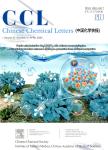Bismuth chloride@mesocellular carbon foam nanocomposite cathode materials for rechargeable chloride ion batteries
Bismuth chloride@mesocellular carbon foam nanocomposite cathode materials for rechargeable chloride ion batteries作者机构:College of Materials Science and EngineeringNanjing Tech UniversityNanjing 211816China CAS Key Laboratory of Materials for Energy ConversionShanghai Institute of CeramicsChinese Academy of SciencesShanghai 200050China Jiangsu Collaborative Innovation Center for Advanced Inorganic Functional CompositesNanjing Tech UniversityNanjing 211816China
出 版 物:《Chinese Chemical Letters》 (中国化学快报(英文版))
年 卷 期:2022年第33卷第4期
页 面:2200-2204页
核心收录:
学科分类:0808[工学-电气工程] 08[工学] 0805[工学-材料科学与工程(可授工学、理学学位)] 0703[理学-化学]
基 金:supported by the National Natural Science Foundation of China (No. 51602150) the Priority Academic Program Development of Jiangsu Higher Education Institutions (PAPD) the Opening Project of CAS Key Laboratory of Materials for Energy Conversion。
主 题:Chloride ion batteries Cathode materials Bismuth chloride Mesocellular carbon foam Electrochemistry
摘 要:Chloride ion batteries(CIB) are considered to be one of the most promising energy storage devices. As cathode materials for CIBs, metal chlorides have many advantages, such as high theoretical energy density, abundant elemental resources and ideal discharge voltage plateau. However, the dissolution and huge volume change of metal chlorides during cycling lead to considerable short lifespan, which limits their potential application for CIBs. Herein, the bismuth chloride nanocrystal is confined in mesocellular carbon foam matrix by a new vacuum impregnation approach. The mesocellular carbon foam with large interconnected pores(15.7 or 23.2 nm) may buffer the large volume variation of bismuth chloride during charge and discharge, giving rise to significantly enhanced electrochemical performance. The as-prepared bismuth chloride@mesocellular carbon foam cathode delivered an initial discharge capacity of 298 m Ah/g and a reversible capacity of 91 m Ah/g after 60 cycles. In contrast, the pure bismuth chloride cathode almost cannot discharge after 30 cycles. This is the first report that the metal chloride cathode can achieve a prolonged cycling in CIBs.



